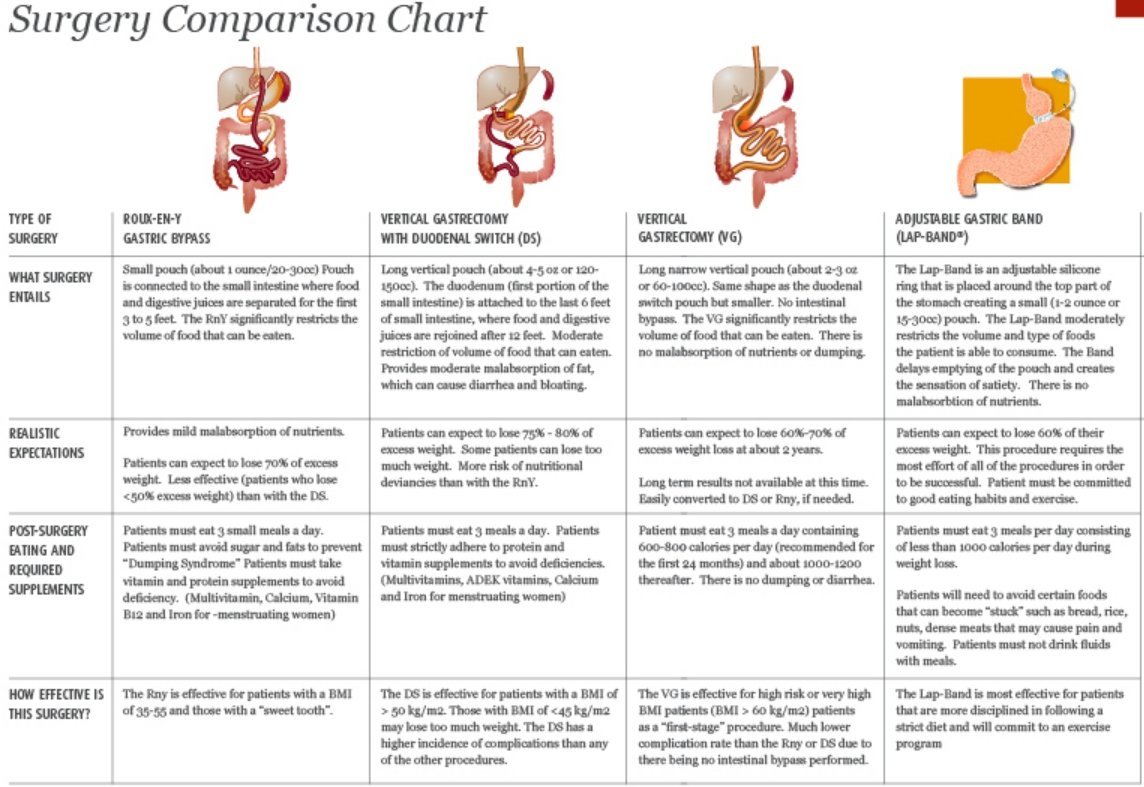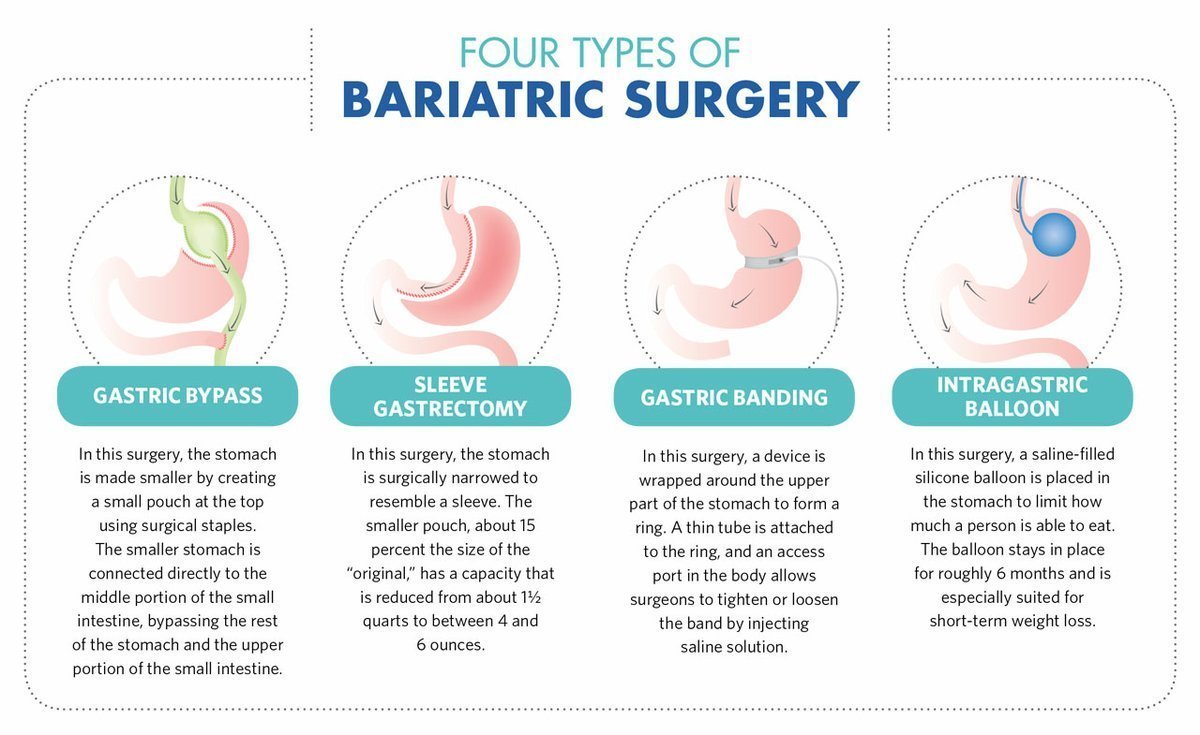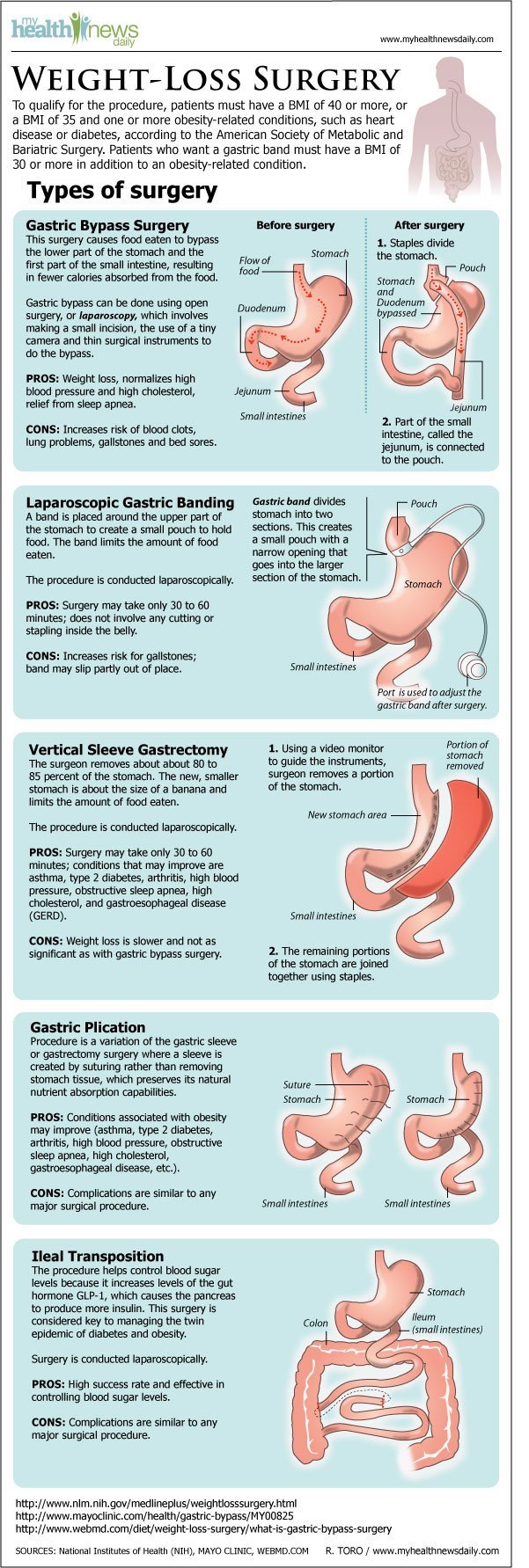Types of Bariatric Surgery : Being overweight isn’t automatically synonymous with being ill.
Even so, obesity comes with a number of negative side effects. It can increase your risk for serious health conditions, cause pain and difficulty moving, and stop you from doing the things you love to do.
Many people who are overweight or obese work hard to shed their extra pounds, but to no avail. If you struggle with the same thing, don’t give up hope. You might qualify for a weight loss surgery that can give you the help you need. Newcastle Surgery advises individuals struggling with weight loss that they may be eligible for surgical weight loss procedures such as lap band surgery or gastric sleeve surgery that can provide a life-long solution for those who struggle to maintain a healthy weight. If cost is a concern, you can find out about the cost of gastric sleeve surgery here.
Keep reading to learn about the types of bariatric surgery available and find out which is best for your needs.
How Bariatric Surgery Works
Weight loss surgeries work in one of two ways. Some work by reducing the physical size of your stomach, making you feel full with less food. This process is known as “restriction,” and it helps you lose weight by directly reducing your caloric intake.
The second method, called “malabsorption,” changes how your body takes up the nutrients you eat. It works by shortening (or bypassing) your small intestine, reducing the number of calories you’re able to absorb regardless of what you eat. This means that you have to be very careful to eat foods high in essential nutrients so you don’t end up with deficiencies.
Some more drastic surgeries combine both methods. This means you can only take in a small number of calories, to begin with, and your body only absorbs a small portion of them. The hope is that you’ll burn more calories than your body absorbs, forcing it to rely on stored fat for energy.
Types of Bariatric Surgery
There are four main types of bariatric surgery. They’re each best suited for different situations, and qualifying for one surgery doesn’t always mean you’ll qualify for another. Here’s a breakdown of each type.
Laparoscopic Gastric Band
Laparoscopic surgery uses a tiny camera and delicate surgical tools to keep the incisions as small as possible. It decreases the risk of internal scarring and has a much shorter recovery time than traditional surgery.
In a laparoscopic gastric band operation, the surgeon inserts a small, inflatable ring through the incision and ties it around the top of your stomach. When the band is inflated, it creates a pouch that slows food down as it travels through your digestive tract. This helps people to feel full faster, reducing the amount of food they eat.
Because the band is inflatable, your surgeon can gradually increase the amount of restriction over time. It’s also the only procedure on this list that’s completely reversible.
The downside is that gastric bands don’t always result in fast weight loss early on, and they may result in less weight loss overall. You have to be very strict with your diet for this procedure to be effective.
Once you have achieved your result and are living a healthy lifestyle, you might consider the options to remove a lap band. The removal costs for a surgery like this can be a little expensive, but finding a trusted physician to guide you through the process is incredibly helpful. At the end of the day you shouldn’t be breaking the bank to remove a lap band with a new healthy lifestyle.
Possible complications include esophageal dilation from overeating and the band slipping or falling off. Even so, this procedure has a low mortality rate and is generally safe.
Gastric Sleeve
A gastric sleeve (or sleeve gastrectomy) is another laparoscopic procedure that uses the restriction method. The surgeon removes 80% of your stomach so that you’re left with a tube about the size of a banana. This results in significant, rapid weight loss soon after the procedure.
There’s some evidence that removing most of the stomach causes changes in hunger and satiety hormones. It’s also linked to improvements in glycemic control (blood sugar regulation), leading to a reduction of diabetes symptoms.
This procedure is not at all reversible, but it can be re-routed later on into a gastric bypass or duodenal switch if needed. It’s helpful for super-obese patients that don’t yet qualify for the other types of bariatric surgery. After they’ve lost enough weight for the operation to be safe, their surgeon may revise the sleeve to make use of the malabsorption method as well.
Gastric Bypass
Gastric bypass may be the most well-known type of weight loss surgery, and many doctors consider it the best balance of safety and results. It’s so named because when you eat, the food completely bypasses your stomach and the first half of your small intestine.
The surgeon sews the top of your stomach into a small pouch, similar to the one created by a gastric band. However, this pouch is sealed off from the rest of your stomach and is the only part that can hold food.
Then, the surgeon divides your small intestine into two parts. The lower half is connected back up to the new stomach pouch, reducing the amount of time your body has to absorb calories.
Gastric bypass surgery is a very fast and effective weight-loss method that can also relieve diabetes symptoms. It’s sometimes possible to reverse the procedure if absolutely necessary, but doctors try to avoid it.
Duodenal Switch
The duodenal switch begins the same way as the gastric sleeve procedure—by removing most of the stomach. The surgeon then cuts through the beginning of the small intestine (a part called the duodenum) to separate it from the rest. They then reattach that part to the other end of your small intestine, reducing the total length by about 75%.
Next, the surgeon takes the leftover middle piece of the small intestine and uses it to re-route bile and digestive enzymes into the large intestine. The combination of restriction and malabsorption leads to massive weight loss in a short period of time.
This is by far the most invasive of bariatric procedures. But for those who are super morbidly obese (a BMI >50), it can help them shed hundreds of pounds and may be worth the risk.
What Results Can You Expect?
Bariatric surgery isn’t a miracle cure, but it is a helpful tool.
It’s important to remember that a healthy diet with best bariatric foods and exercise are crucial to your success. If you don’t adopt a healthy lifestyle after surgery, you’re at risk of gaining back the weight you lost and more.
If you do continue to follow your nutrition and fitness plans, though, you have a good chance of losing a large percentage of your weight.
You can view image results of people who have gone through similar procedures to get an idea of how much weight you’ll lose over time. This is a great way to find the motivation to push through and keep making healthy choices.
Are You a Candidate for Bariatric Surgery?
If you have a significant amount of weight to lose, you may qualify for one of these types of bariatric surgery. Talk to your doctor to find out what your options are and to identify any potential barriers to surgery.
If you found this article helpful, make sure to check out the rest of our website for more ways to maintain a healthy weight.
Related Videos about Types of Bariatric Surgery :
What’s Right for Me?: Types of Bariatric Surgery
Introduction to Bariatric Surgery
Three Types of Bariatric Surgery
What Are The Different Types Of Bariatric Surgery? – The Nebraska Medical Center
What are the types of bariatric surgery?
https://www.youtube.com/watch?v=TM5gywep_Hk
Related Infographics about Types of Bariatric Surgery :




Types of Bariatric Surgery
bariatric surgery risks, what is bariatric surgery, bariatric surgery side effects, what is the safest form of weight loss surgery, bariatric surgery requirements, bariatric surgery recovery, bariatric surgery process, new weight loss surgery options,




